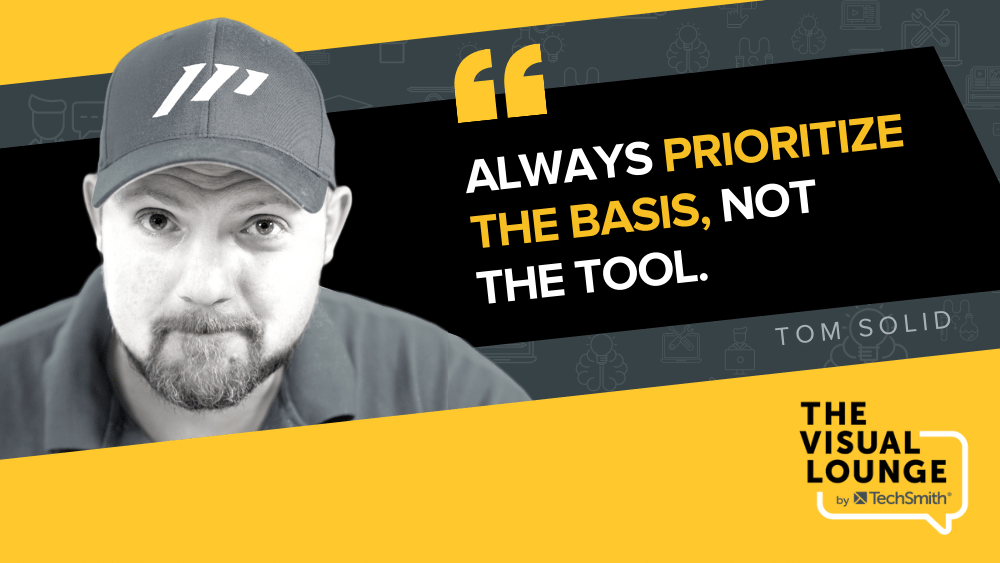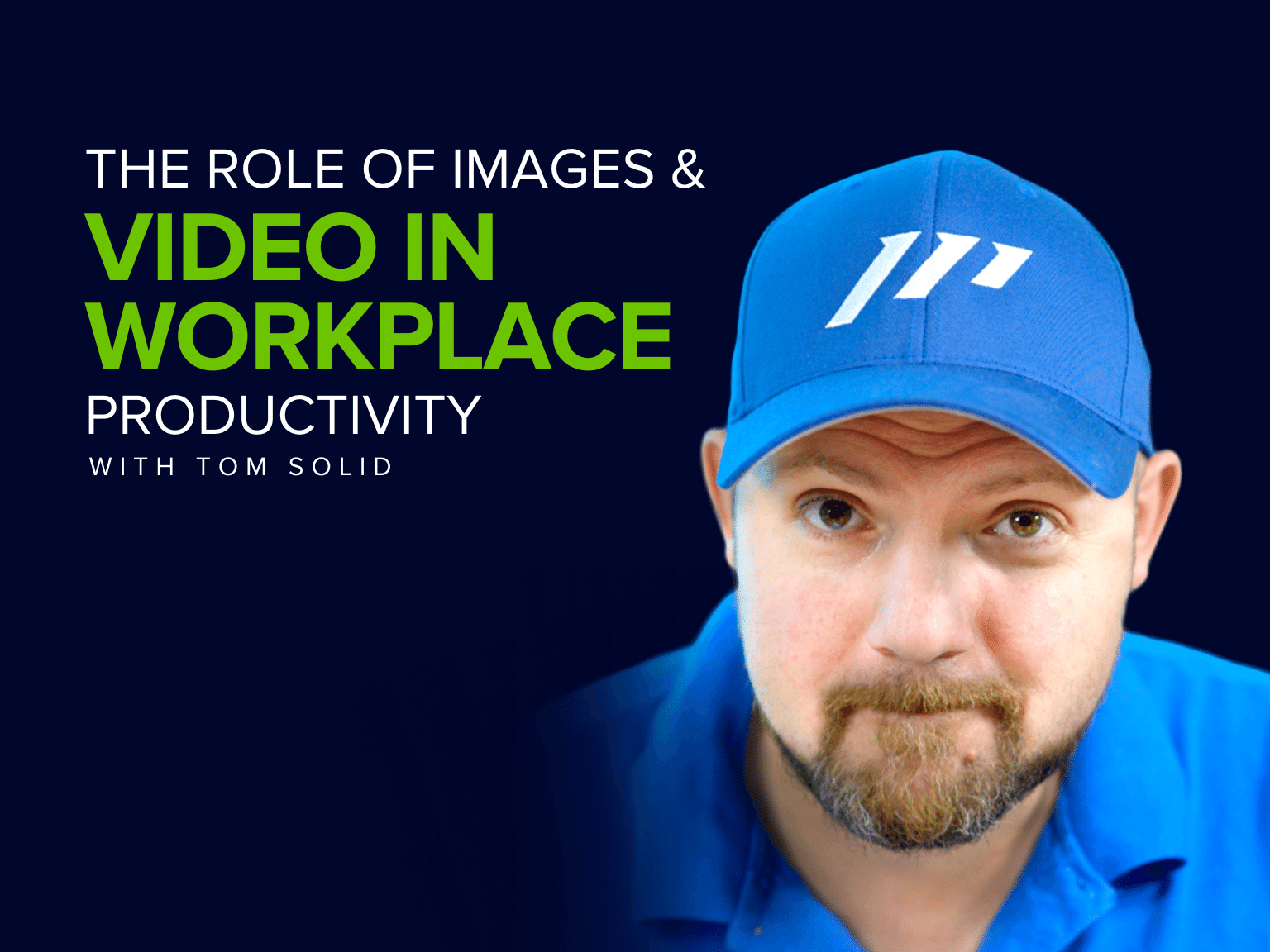No one can completely stress the importance of videos, images, and infographics in today’s world. Since humans are quite visual in their understanding, these media have the potential to send engagement levels soaring.
However, there’s one major issue to tackle.
With so many choices of tools, applications, and methods to choose from these days, it has never been easier to fall down the rabbit hole of unproductivity. This leads to the question of the day, is there a better way to use visual content creation tools to increase productivity?
In today’s episode, we have Tom Solid, the CEO of The Paperless Movement and productivity expert. He’s also the host of Tom at Paperless Movement.
Tom spent 16 years in the corporate world and academia solving the same productivity problems that plague many in the digital era. While coaching multiple teams across different industries, he has recorded as much as a 60% increase in productivity levels.
The secret behind this? Simply using the right project management and digital tools.
A brainchild of his is the Input Control, Output Refine (ICOR) framework, which is central to The Paperless Movement and the services they offer.
You can watch the video on this topic at the top of this post, to listen to the podcast episode, hit play below, or read on for more…
Begin with a tool-agnostic approach
“Switching from a notebook to an iPad Pro doesn’t solve anything — it just gets worse.”
However, that’s the mentality most people have today. If they could just get that high-rated tool or device, perhaps it would streamline tasks and eventually boost their productivity. Here’s where it gets complicated —with pieces of paper, you only have your methods to contend with. With a digital device, you have to consider both your methods and the myriad of tools available.
For Tom, this realization came when he decided to switch from a paper notebook to an iPad. Logically, this transition should have made his work a lot easier. But it was a downward spiral from that point.
Over time, he developed a more tool-agnostic approach that worked — not just for him but anyone looking to leverage digital tools for productivity.
In a nutshell, it’s counterproductive and out of context to believe a tool will do wonders for your process without considering the following:
- The overall task
- Individual needs
- Team-wide needs
- Special features
- Tools that work well together
- The desired outcome
The role played by images and video in workplace productivity
Right off the bat, videos and images make information easier to digest. According to Tom, everything has to be simplified to ensure people can understand it, and that’s what visuals do.
Consider the onboarding process in most organizations. After getting all the paperwork sorted out, the next step is for the new employee to get acquainted with any Standard Operating Procedures (SOPs) in place.
Admittedly, pages of bulky text are one way to get a message across. However, it doesn’t guarantee that the message will be understood. In Tom’s experience, the best way to go about these things is to turn the SOP into an instructional video. That beats reading through a 100-page document any day.
It’s also worth mentioning the flow of things here.
With the right visual content creation tools, workflow is practically a breeze.
Panning back to what Tom said about taking a tool-agnostic approach, it’s vital to get tools that work well together. If that isn’t prioritized, you’ll end up introducing friction into the flow, which defeats all purposes.
Does the ICOR framework apply to images and videos?
The ICOR framework is something that Tom came up with to streamline all processes. So, whether you work with videos, words, numbers, etc., it’s a tried and tested way to get things done correctly.
Right at its core is the principle that “everything you do should have a purpose and a defined place where you put it.”
So, let’s say you’re throwing an infographic together or recording a video, “finding a single source of truth” is pertinent. Once you’ve defined this single source of truth, it takes redundancies out of the equation. To narrow things down, it helps to ask questions that point you back to the “why” of things.
Imagine you’ve found some interesting visual content and want to share it. With ICOR in mind, you’d probably consider:
- The type of information collected
- What part is vital to your message
- How to present it
No doubt, this is just the tip of the iceberg as far as Tom’s ICOR framework is concerned. But, in the end, this could help narrow down the types of tools to use, the medium to share them on, and the form they should take.
Priority levels make all the difference in the world

Generally speaking, priorities make the world go round. You could have all the right visual content-creating tools and the right processes in place, but if you’re working without defined priorities, none of that really matters.
Approaching the task, you probably have a clear picture of what you want and when you want it.
Here’s the issue, you need to go deeper if you want to strike gold.
Don’t just stop once you’ve categorized your work based on urgency, map out how urgent it is.
Though this translates slightly differently from one person to the next, a good place to start is to consider what the words urgent, high-priority, normal priority, and low-priority mean to you?
If the answer is “nothing,” then you’re setting yourself up for worlds of disappointment.
Tom explains how a clear-cut definition of these words takes away any room for finger-pointing or excuses.
Productivity is a journey, not a destination
It’s easy to look at just about anyone these days and come out the end feeling inadequate. With that in mind, Tom drops some words of wisdom, “we are all in the same boat.” Everyone, Tom inclusive, is still in the process of finetuning their methods.
The only difference is that some people are further ahead in their quest for continuous improvement.
To hear more of what Tom has to say about productivity in the workplace, don’t miss out on the full episode. Links to the podcast and video are available at the top of this page.
For more resources, hacks, and tips on content creation, head down to TechSmith Academy.





